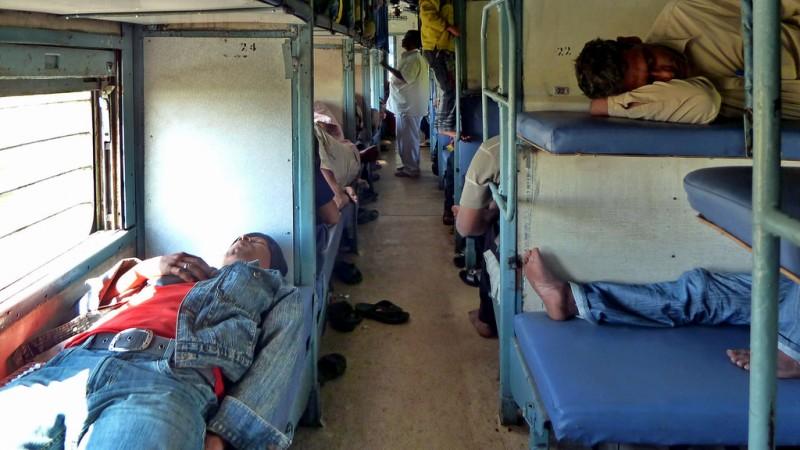
The problems of train passengers that come with waitlisted tickets may be a thing of the past from April 1, with Indian Railway coming up with an Alternate Train Arrangement Scheme (ATAS) called Vikalp, as part of which separate travel arrangements will be made for passengers on the waiting list.
Also read: Railways increases number of RAC berths, but reduces Tatkal quota in Shatabdi, Duronto and Rajdhani
This move from Railway comes in light of many passengers not being able to travel when they want to because of waitlisted tickets, which they have to return, and many trains plying with vacancies despite being on busy routes.
The Union Railway Ministry, in a series of recent tweets, gave details of the scheme:
1. The occupancy pattern of reserved accommodation is not uniform on trains. It varies over peak and lean periods, from sector to sector and over different trains.
2. While there are vacant accommodations in some trains, in other trains on the same sector passengers remain waitlisted and unable to travel.
3. There is loss on two fronts: Waitlisted passenger are unable to travel, and Railway has to refund the ticket fare to such passengers. The Railway also loses if berths go vacant on the same route where a waitlisted passenger was unable to travel.
4. In order to avoid accommodations going vacant in different classes of a train, an upgradation scheme was introduced in 2006, wherein passengers with lower-class tickets are upgraded against vacant accommodation available in upper classes, and that too without paying anything extra. However, there was no scheme to take care of upgradation or transfer across different trains running between the same origin-destination pairs.
5. In order to meet this requirement, an ATAS was conceptualised and introduced in November 2015 under the name Vikalp, where an optional facility was given to passengers remaining waitlisted at the time of charting to shift to an alternate train.
6. Initially, this scheme was introduced on the Delhi-Jammu and Delhi-Lucknow sectors with a limited scope of transferring passengers across Mail and Express trains. The scheme was subsequently reviewed and in April 2016 extended to five more sectors: Delhi-Howrah, Delhi-Chennai, Delhi-Mumbai, Delhi-Bengaluru and Delhi-Secunderabad. The scope of the scheme was limited to similar-category of trains: Passengers could not be shifted across all categories of trains.
7. From April 1, the Vikalp scheme is being expanded to provide shifting of waitlisted passengers of one train across trains of all categories. And this can happen without the payment of the difference in fare in the trains.
8. Through the Vikalp scheme, a passenger booked in a normal train can be shifted to an alternate train, including Rajdhanis, Humsafars, Durontos, a Shatabdi, as well as special and Suvidha trains.
9. This is expected to optimise berth utilisation across all trains, carry more passengers and increase earnings by reducing refunds of waitlisted tickets.
10. The expanded Vikalp scheme will be available on e-tickets to start with, but will later be extended to passenger reservation system (PRS) tickets.

















